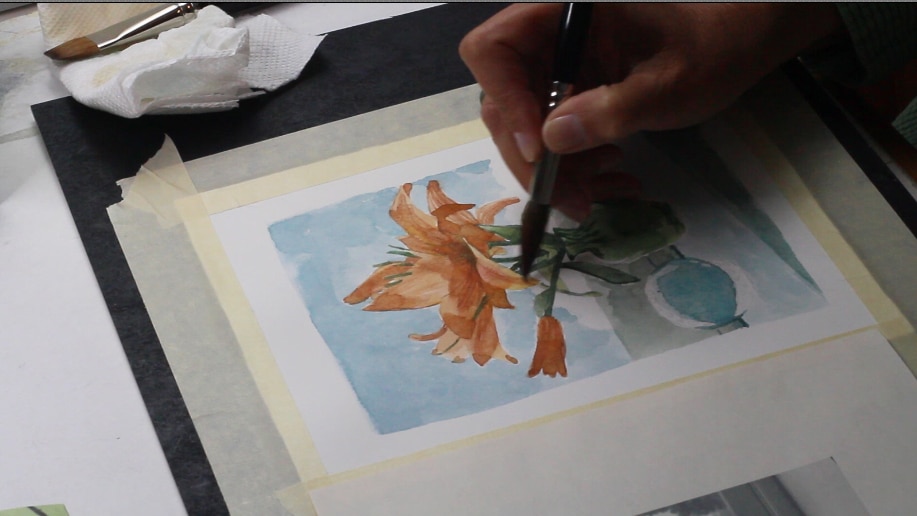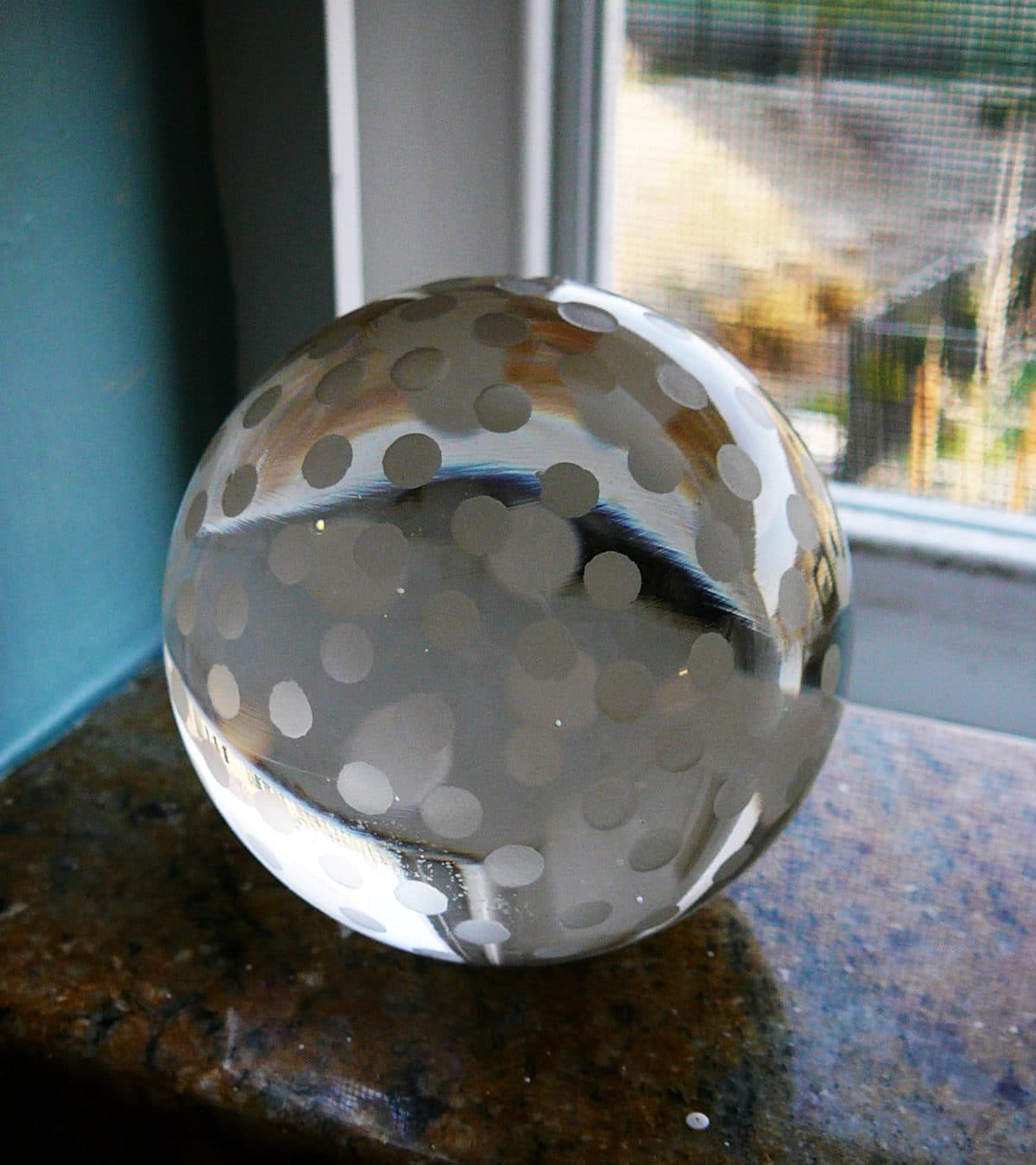Adding Colored Pencil to Watercolor Paintings
I’ve posted a new watercolor & colored pencil tutorial on my youtube channel.
The watercolor painting still life floral (above) was the demonstration in the video tutorial.
Using colored pencil over watercolors is a very effective way to adjust color, shape and values on a painting that went south.
This video demonstration is a short primer on the supplies, and sequence of some mixed media fun on a watercolor.
How to Use Colored Pencils
I love colored pencils by themselves, and they’re an excellent addition to printmaking. (You can read more about adding colored pencil to monotype prints here.)
Colored Pencils also do a fine job of adding a little Shazam! to a watercolor that needs a pinch of je ne sais quoi.
Do you have a secret cupboard of frowny-face watercolors that need refinement, repair, or a second chance?
Perhaps the time that’s passed since you painted them will present revelations on where to take them next. If you’ve already exhausted the possibilities in watercolor application, put on your nurse’s cap, and pull out your colored pencils for some fix-it fun.
If that still life watercolor you painted in the Spring was a lost cause, you get to revisit your art with new ideas, and nothing to lose.
Colored Pencils to Fix Watercolor Paintings
Colored Pencil & Red-Cross-Nurse-Betty to the rescue! If you’re not sure where to start, you can watch the colored pencil over watercolor video tutorial below.
And if you have a tip or trick to rescue lost watercolors, please share it in the comments so we can all benefit from your good research.
Thanks, and happy practicing!
I’ll see you in the next post!
Belinda
P.S. Do you know about Garrison Keillor’s The Writer’s Almanac? It’s a 5-minute daily podcast featuring historical facts, author birthdays, writing arts and a poem. I subscribe, and I love it. You can either read the email you get each day, or listen to it as a very mini-podcast. Start your morning with a listen in the time it takes to put on socks and shoes. 🙂
Art Quote
Ultimately, literature is nothing but carpentry. Both are very hard work. Writing something is almost as hard as making a table. With both, you are working with reality, a material just as hard as wood. Both are full of tricks and techniques. Basically very little magic and a lot of hard work involved.
Gabriel Garcia Marquez




I’m a bit behind in checking out some blogs so I’ve just watched your delicious demo of the bathtub. You quoted Juliette Aristides (Classical Painting Atelier) but I wasn’t able to find that particular quote on the internet. Could you share that text? I loved it! Now onto watching the above demo! With sincere thanks, Gayle
Hi Gayle, Thanks for the feedback on the bathtub painting video! 🙂 I don’t think the Juliette Aristides quote is on the net, but it’s on page 3 of chapter one in the hard cover version of Classical Painting Atelier, and I just transcribed it as the art quote for today’s blog post: http://bit.ly/21JxzGs
So much appreciated Belinda! This quote will be up where I can read it every day!
Hi Belinda,
I love your newest tutorial….thanks. I have been using pastel pencils to put tiny details into some watercolor works. I have not tried regular color pencils because I thought they might leave a waxy shine against the matt watercolor paint. The pastel pencils can be erased pretty well if needed, but it is a little hard to get a nice clean sharp point. Do you see any reason to not continue with the pastels? They are easily blended too.
I will definitely try the regular ones. Oh, and your painting is super lovely!
Hi Marilyn, By all means, continue with the pastels, especially since they’re working for you. You can use a razor blade to sheer wood away from the pastel stem, and then a fine sandpaper pad (they’re available online at art supply stores or in the drafting section of your local art supply store) to sharpen it to a fine point.
The “verithin” colored pencils don’t erase well, so if you have those, maybe wait & try the prismacolor premiere and soft core versions of the pencils, since they do erase, but do experiment away! Thanks for your compliments!
I love the painting, and the demo on coloured pencil. Although I don’t use watercolour that often, I will probably try this in the future. Super work.
XOXOXOXOXO Barbara
Hi Barbara, With your courageous use of color, I predict a watercolor with colored pencil from your studio would be fabulous! I hope you post the results if you experiment. Thanks for the compliments!
xoxoxoxo
I have used coloured pencils over watercolour too. For coloured pencils on their own I have found it useful to have a hard white pencil – although one might use too a simple blunt-ended awl – to draw lines that need to be paler than the main picture. The tip indents the paper and shading subsequently passes over the groove – used it for the rigging of a yacht drawing. I have also drawn patterns in the same way on separate pieces of thin card and used the raised side under the drawing – the shading over them gets highlighted on the rise of the pattern. You can make stipples, foliage patterns, anything that suits. But all this maybe common knowledge – I just work by the seat of my pants when I want an effect!
Hi there seamustheone – I don’t think it’s common knowledge, so thanks for describing it here in such a clear way; it makes complete sense to me, and anything that qualifies as tips or tricks in art-making is an encouragement to folks just starting out, or those of us who can’t resist an experiment. 🙂